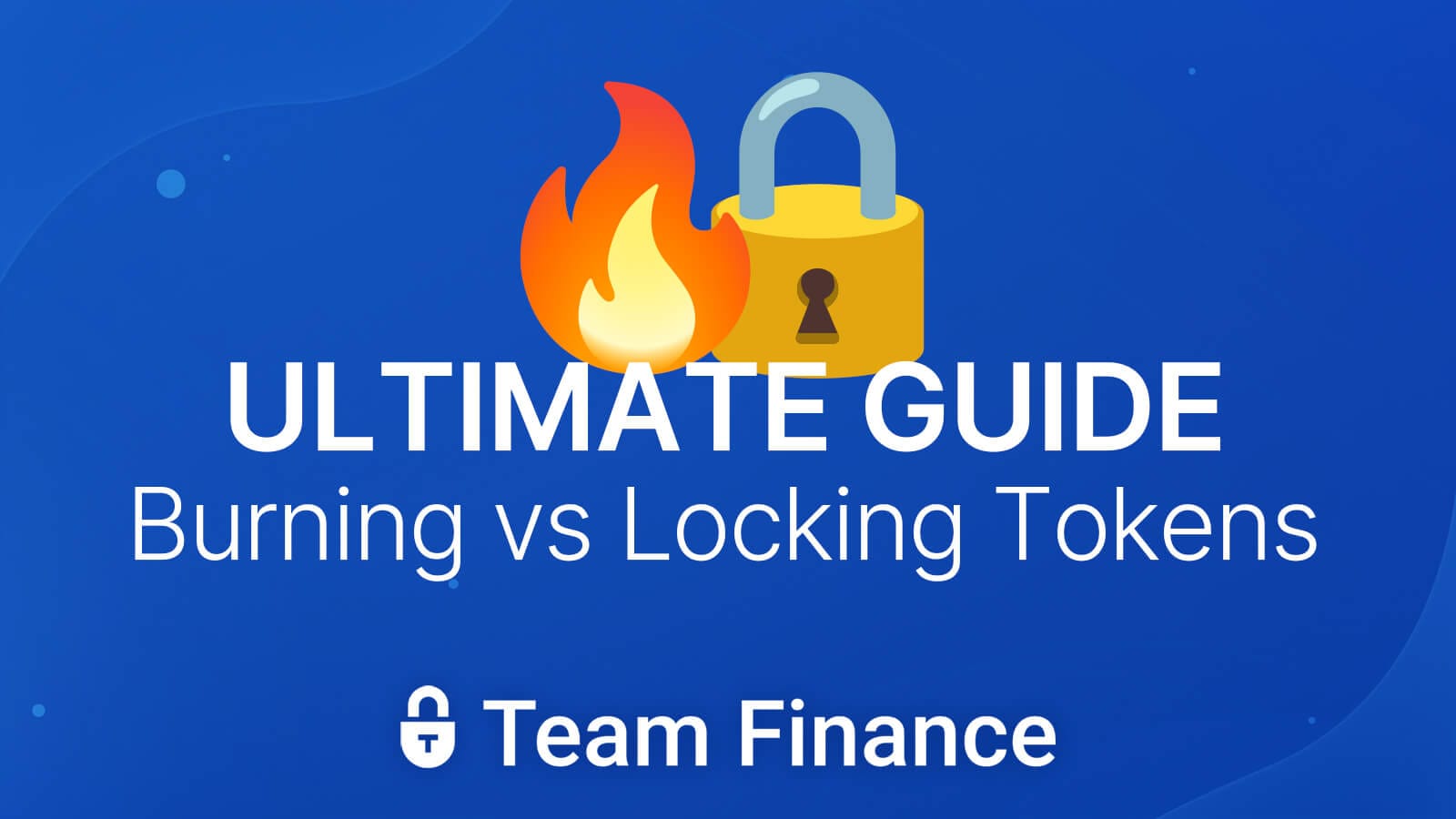Burning vs Locking Tokens: Difference's Explained
Should you burn or lock your tokens? This guide will help you understand why locking is the only true answer...

Let’s cut to the chase: burning LP tokens is not a good idea.
Both burning and locking are often seen as ways to build trust and prevent rug pulls, but only one of them holds up under real scrutiny.
In this guide, we’ll explain why locking liquidity is the only sustainable strategy, and why burning LP tokens is a dangerous myth that could hurt your project and its community.
🔥Why Projects Burn Tokens
Token burning means permanently removing tokens from circulation by sending them to a burn address (e.g., the zero address) or calling a burn function.
A zero address (also called the burn address) on Ethereum and other EVM chains looks like this:
This address is not owned by anyone and is used to destroy tokens, once tokens are sent here, they are gone forever and can never be retrieved or accessed. So don't make the mistake of testing this out and expecting a happy ending to your day.
There's also a "dead address" often used for similar purposes:
Some projects prefer sending tokens here because it’s more clearly associated with burning, but both serve the same function: removing tokens from circulation.
While this can be used for token supply reduction, it’s a serious no-no when used with LP tokens.
Some project devs burn LP tokens to show trust: “Look, we can’t rug because we can’t access the liquidity” But this comes at a steep cost:
Problems With Burning LP Tokens:
- Irreversible loss of control: You cannot migrate liquidity to newer DEX versions (e.g., Uniswap V3, V4).
- Kills adaptability: Can’t expand to other chains or update the tokenomics.
- Short term thinking: Suggests the team doesn’t plan for long-term growth (did you check their roadmap?)
- Security: Bad devs may pretend to burn LPs but send them to accessible wallets.
- Even when done “right,” it’s still limiting: You’ve locked yourself out… permanently.
Vitalik himself has publicly discouraged projects from sending tokens to his address as a “burn mechanism.” He believes you should use a more ethical and proven technique - certainly a more transparent one.
🔒The Smarter Option: Liquidity Locking
Locking LP tokens in a verifiable, time-bound smart contract is the gold standard for Web3 teams looking to build trust and maintain flexibility. It proves you're serious about security without sacrificing future utility.
Benefits of Liquidity Locking:
- Confidence: Prevents sudden liquidity removal (rug pulls).
- Strategic control: Maintain the option to migrate, upgrade, or expand.
- Compatibility: Displayed on other platforms and dApps through locker APIs.
- Transparency: Publicly visible token lock information - this is a way to proudly show that you care about your own project.
Some lockers even offer features like:
- Multi-sig support
- Gradual unlocking (vesting)
- Cross-chain visibility
- Branding and token customization
On many platforms you also get the ability to publicly display your lock through public landing pages that display information about your token - Team.finance does this for every one of it's token management services.
What's the Difference Between Burning and Locking LP Tokens?
| Feature | Burning LP Tokens 🚫 | Locking LP Tokens ✅ |
|---|---|---|
| Reversible? | ❌ No | ✅ After unlock |
| Can migrate liquidity? | ❌ No | ✅ Yes |
| Boosts trust? | ❌ Temporarily | ✅ Sustainably |
| Adds to token security? | ❌ Not really | ✅ Absolutely |
| Good for long-term growth? | ❌ No | ✅ Yes |
Final Thoughts
Burning LP tokens is an irreversible gamble, this does not show transparency or trust - which is important to community members.
If you're serious about your project and your community, locking your liquidity is the responsible move.
Want to learn more about how liquidity locking works? We published a guide on the different locks available for project owners, and created the #1 liquidity locking app for tokens across 20+ blockchains

